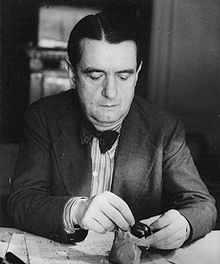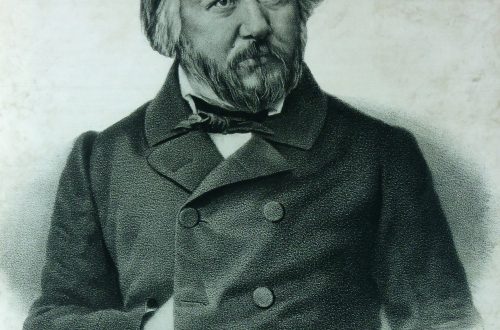
Johann Nepomuk Hummel |
Johann Nepomuk Hummel
Hummel was born on November 14, 1778 in Pressburg, then the capital of Hungary. His family lived in Unterstinkenbrunn, a small parish in Lower Austria where Hummel’s grandfather ran a restaurant. The boy’s father, Johannes, was also born in this parish.
Nepomuk Hummel already had an exceptional ear for music at the age of three, and thanks to his extraordinary interest in any kind of music, at the age of five he received from his father a small piano as a gift, which he, by the way, reverently kept until his death.
From 1793 Nepomuk lived in Vienna. His father at that time served here as the musical director of the theater. In the first years of his stay in the capital, Nepomuk rarely appeared in society, as he was mainly engaged in music. First, his father brought him to Johann Georg Albrechtsberger, one of Beethoven’s teachers, to study counterpoint, and later to the court bandmaster Antonio Salieri, from whom he took singing lessons and who became his closest friend and even was a witness at the wedding. And in August 1795 he became a student of Joseph Haydn, who introduced him to the organ. Although during these years Hummel rarely performed in private circles as a pianist, he was already considered in 1799 one of the most famous virtuosos of his time, his piano playing, according to contemporaries, was unique, and even Beethoven could not compare with him. This masterful art of interpretation was hidden behind an unprepossessing appearance. He was short, overweight, with a roughly molded face, completely covered with pockmarks, which often twitched nervously, which made an unpleasant impression on the listeners.
In the same years, Hummel began performing with his own compositions. And if his fugues and variations only attracted attention, then the rondo made him very popular.
Apparently, thanks to Haydn, in January 1804, Hummel was admitted to the Prince Esterhazy Chapel in Eisenstadt as an accompanist with an annual salary of 1200 guilders.
For his part, Hummel had boundless reverence for his friend and patron, which he expressed in his piano sonata Es-dur dedicated to Haydn. Together with another sonata, Alleluia, and a fantasia for piano, it made Hummel famous in France after Cherubini’s concerto at the Paris Conservatoire in 1806.
When in 1805 Heinrich Schmidt, who worked in Weimar with Goethe, was appointed director of the theater in Eisenstadt, the musical life at the court revived; regular performances began on the newly constructed stage of the great hall of the palace. Hummel contributed to the development of almost all the genres accepted at that time – from various dramas, fairy tales, ballets to serious operas. This musical creativity took place mainly during the time he spent in Eisenstadt, that is, in the years 1804-1811. Since these works were written, apparently, exclusively on commission, in most cases with a significant time limit and in accordance with the tastes of the public of the time, his operas could not have a lasting success. But many musical works were very popular with the theatrical audience.
Returning to Vienna in 1811, Hummel devoted himself exclusively to composing and music lessons and rarely appeared before the public as a pianist.
On May 16, 1813, Hummel married Elisabeth Rekel, a singer at the Vienna Court Theatre, sister of the opera singer Joseph August Rekel, who became famous for his connections with Beethoven. This marriage contributed to the fact that Hummel immediately came to the attention of the Viennese public. When in the spring of 1816, after the end of hostilities, he went on a concert tour to Prague, Dresden, Leipzig, Berlin and Breslau, it was noted in all critical articles that “since the time of Mozart, no pianist has delighted the public as much as Hummel.”
Since chamber music was at that time identical to house music, he had to adapt himself to a wide audience if he wanted to be successful. The composer writes the famous septet, which was first performed with great success on January 28, 1816 by the Bavarian royal chamber musician Rauch at a home concert. Later it was called the best and most perfect work of Hummel. According to the German composer Hans von Bulow, this is “the best example of mixing two musical styles, concert and chamber, that exist in musical literature.” With this septet began the last period of Hummel’s work. Increasingly, he himself processed his works for various orchestra compositions, because, like Beethoven, he did not trust this matter to others.
By the way, Hummel had friendly relations with Beethoven. Although at different times there were serious disagreements between them. When Hummel left Vienna, Beethoven dedicated a canon to him in memory of the time spent together in Vienna with the words: “Happy journey, dear Hummel, sometimes remember your friend Ludwig van Beethoven.”
After a five-year stay in Vienna as a music teacher, on September 16, 1816, he was invited to Stuttgart as court bandmaster, where he staged operas by Mozart, Beethoven, Cherubini and Salieri at the opera house and performed as a pianist.
Three years later, the composer moved to Weimar. The city, along with the uncrowned king of the poets Goethe, received a new star in the person of the famous Hummel. Hummel’s biographer Beniowski writes of that period: “To visit Weimar and not listen to Hummel is the same as to visit Rome and not see the Pope.” Students began to come to him from all over the world. His fame as a music teacher was so great that the very fact of being his student was of great importance for the future career of a young musician.
In Weimar, Hummel reached the height of his European fame. Here he made a real breakthrough after fruitless creative years in Stuttgart. The beginning was laid by the composition of the famous fis-moll sonata, one that, according to Robert Schumann, would be enough to immortalize the name of Hummel. In impassioned, subjectively agitated fantasy terms, “and in a highly romantic manner, she is almost two decades ahead of her time and anticipates the sound effects that are inherent in late romantic performance.” But the three piano trios of his last period of creativity, especially opus 83, contain completely new stylistic features; bypassing his predecessors Haydn and Mozart, he turns here to a “brilliant” game.
Of particular note is the es-moll piano quintet, completed presumably in 1820, in which the main principle of musical expression is not elements of improvisation or ornamental embellishments, but work on theme and melody. The use of Hungarian folkloric elements, a greater preference for the pianoforte, and fluency in melody are some of the musical features that distinguish Hummel’s late style.
As a conductor at the Weimar court, Hummel already took his first leave in March 1820 to go on a concert tour to Prague and then to Vienna. On the way back, he gave a concert in Munich, which was an unprecedented success. Two years later he went to Russia, in 1823 to Paris, where, after a concert on May 23, he was called “the modern Mozart of Germany.” In 1828, one of his concerts in Warsaw was attended by the young Chopin, who was literally captivated by the master’s playing. His last concert tour – to Vienna – he made with his wife in February 1834.
He spent the last weeks of his life arranging Beethoven’s piano string quartets, which he had been commissioned in London, where he intended to publish them. The illness exhausted the composer, his strength slowly left him, and he could not fulfill his intentions.
Approximately a week before his death, by the way, there was a conversation about Goethe and the circumstances of his death. Hummel wanted to know when Goethe died – day or night. They answered him: “In the afternoon.” “Yes,” said Hummel, “if I die, I would like it to happen during the day.” This last wish of his was fulfilled: on October 17, 1837, at 7 o’clock in the morning, at dawn, he died.





